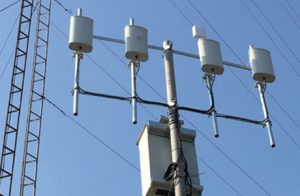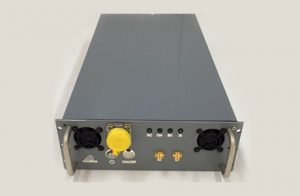1. The emanating threat of drones
In recent years the threat of drones has become increasingly vivid to many security agencies. Drones, nowadays, are used by terrorist and criminals for a multitude and variety of activities such as dropping small bombs on enemy forces in Syria and Iraq, and the same drones are often used for reconnaissance and smuggling of illicit contrabands to prisons.
2. The solution – Drone jammer – concept and method of operations
Phantom Technologies has developed and created in the last couple of years a technological response to this type of threat. Phantom’s concept of operations relies on early detection of the drone threat by scanning the sky looking for hostile drones.
The method of operations Of Phantom’s EAGLE 108 drone jammer is based on four basic elements:
a. Scanning the area of interest for drones
b. Detect – the signal of the drone
c. Jamming the drone signal to the operator
3. Drone jammer – Solution description
The drone detection and jamming system EAGLE108 was designed to neutralize the flight unauthorized Drones/Quadcopters by jamming their downlink signal. The EAGLE108 has unique software which allows quickly detecting the drone detection and jamming its communications system from ranges of up to 4km (with special dedicated antennas). The below provides technical description of the system.
3.2 System basic functionalities include the following:
a) Jamming of Wi Fi frequencies 2.4 and 5.8GHz.
b) Jamming of the GPS frequency 1.5GHz.
c) Scan – detect – identify – jam up to 1km.
d) All the above is in fixed installation
e) Additional detection and jamming bands can be added upon demand
3. 3 System’s Modes of operation:
Basically, the drone jammer creates an envelope of jamming which surrounds the drone. Concretely, the system jams the downlink signal of the drone to the drone operator and the signal coming from the GPS satellite. Jamming time has been set up to 2 minutes in order to avoid any possible interference to other RF relevant emissions.
The following explains the various methods of system operations:
a) Manual operation.
b) Automatic detection and jamming
c) Detection only.
3. 4 System deployment options:
a) Fixed installation
b) Vehicle installation
c) Naval Installation
TECHNICAL SPECIFICATIONS JAMMING BLOCK
RF Characteristics
| Output Power | 375W |
| Internal Modulation | FM Hopping Frequency & White Noise |
| Signal Source | DDS & PLL synthesized |
| Power Supply | 28VDC |
| Modules Per Unit | Up to 7 modules |
| Remote Control | TCP/IP Protocol |
| Antenna | External Omni-Directional & Directional Antenna |
EAGLE 108 Drone jammer Possible Jamming Frequency Bands
| Frequency Band | The below represents 7 different bands that are available for installation in the system. Final configuration of the system will be decided with the customer. 27-72 MHz 400-470 MHz 900-1,200 MHz 1,150-1,350 MHz 1,350-1,650 MHz 2,400-2,483 MHz 5,000-5,900 MHz |
| Air Interface Standards | Digital: ISM, GPS, Video & W-LAN |
Physical Data
| Dimensions | 3 x 19″/4U – Total 19″ x 12U |
| Weight | Approx. 60Kg |
Environment of operation
| Operating Temp | -20ºC – +65ºC |
| Humidity | 95% |
| Mil Spec Standard | MIL- STD- 810F |
DIGITAL RECEIVER BLOCK
RF Characteristics
| Frequency Range | 20-6,000 MHz |
| DATA Format | 2 x 16 Bits |
| Instantaneous Bandwidth | 400MHz |
| Squelch | Can be set between -120dBm to -30dBm |
| Gain Control | 80 dB |
| DATA Format | 2 x 16 Bits |
Inputs/Outputs
| Scan Characteristics | Scan Characteristics |
| DATA Interface | LAN/ |
Environment of operation
| Operating Temp | -30 – +65°C |
| Humidity | 5 – 95% |
| Storage Temp. | -40°C – +70°C |
Power
| Operating Voltage, Current | 12V, 2A |







